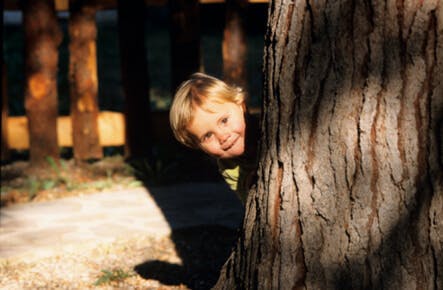Potty Training 101

Question
I am just three years old and I really want to get potty trained, but can't quite do it. Any suggestions?
Ryder - Hillsborough, California
Dr. Greene's Answer
Dear Ryder, You are obviously a very smart little boy to be Surfing the Web, and I really appreciate the fact that you want to be potty trained. I’m sure that very soon you’ll be able to use the potty every time you need to. The fact that you want to will make it very easy for you! I’m including some ideas to help your parents help you with the process, so call them over to the screen . . .
Dear Ryder’s Dad and Mom, You have an adorable son! Most children are ready to tackle the challenge of potty use somewhere between age 2 and shortly after their third birthday, with boys generally at the latter end of this range. Letting you know when their diapers are dirty is an early sign of readiness. When they start to let you know just before they need to go, it is time to begin.
Experts tout many different methods of potty training. Each of them work for some children, or they would not have become popular. By understanding the underlying forces that surround this issue, you will be able to identify which of the many suggestions out there are most likely to work for your child.
The first force is the intrinsic powerful urge in children to grow and develop. The quest for mastery unfolds naturally. Closely coupled with this is the strong desire to imitate those they care about and admire. You can capitalize on this by reading aloud together as a family one of the outstanding books that describe potty use as a part of growing up. My favorite is Toilet Learning by Alison Mack. Illustrations of fire fighters, doctors, baby sitters, and parents all going to the bathroom will delight and educate your son. There are countless other potty-related books and videos that can help get your child interested. Watching the same-sex parent or older sibling in the bathroom reinforces this process. Buying him fun new underwear can further encourage him. Allowing him to pick out a potty seat and using non-food rewards for potty use can also make the process fun.
If these were the only forces affecting potty training, there would be no problem. Fear often plays a major role: fear of failure, fear of disappointing one’s parents, or fear of the potty can derail the process. Potty training tends to come at an age when children’s fears are most intense. De-pressurize the situation.
If your child seems to be afraid of the toilet itself, then gradually acclimatize him to the potty. Have him sit on one of the little potties fully clothed for a few minutes each day while you read to him or tell him a story. When that becomes old hat, take his diaper off so he can sit on it just like Dad and Mom. Eventually this will become old hat, too. Begin putting the contents of his dirty diapers in the potty so he can see what happens. Then give him the opportunity to run around bare-bottomed so he can try to go on the potty if he wants.
If your child is afraid of failure, it is paramount that when he does make a mistake your response is not an exasperated or a punishing one. Instead say something like, “Oops, there it went. Someday soon they’re all going to land in the potty. We’ll try again.” Encourage him that accidents are okay, and that he will ultimately succeed.
The desire for approval is another strong motivating force that impacts potty training. When he does get something in the potty, leave it there for him to admire. Congratulate him warmly, but don’t get too excited or he will feel more pressure.
Sometimes the desire for approval can work against potty training, particularly when a younger sibling is enchanting parents. The child may think that the best way to gain approval is to act like a baby again. In any situation, be careful about communicating the subtle yet powerful message, “You’re growing up too fast…”
Simple physical comfort can be a helpful force. Usually, going in the potty is considerably more comfortable than the alternatives. If children begin holding their stool in, however, the stool can become hard. It will be important to soften the stool using either diet or a gentle medicine from your doctor. During the toilet training process, it can be comfortable and convenient for children to wear pull-ups, but for some, this can slow the process by minimizing comfort as a motivating force.
Physical readiness for potty training often occurs around the time that children develop strong oppositional behavior – you say, “yes,” they say, “no!”; you say, “red,” they say, “blue!” This underlying negativity is the final powerful force affecting potty training. Thankfully, this begins to fade at about age three. Still, if you tell him, “This is what you’ve got to do,” his natural, healthy response is “no,” because he is in the process of developing his unique independent personality. Potty training is not an area to enter into any kind of battle. You will always lose; everyone involved will lose. Instead, minimize the issue and make it quite clear that this is for him – in his timing – and not for you. Help teach him how to do it, but don’t push and don’t punish.
Now that you understand the constellation of forces impacting the toilet training process, you will be able to encourage his unfolding growth, while minimizing the forces that might slow him down. Our role as parents is to help and to teach, but this will be his achievement.


